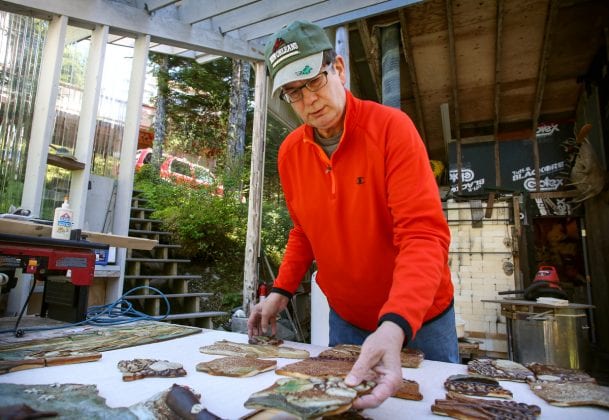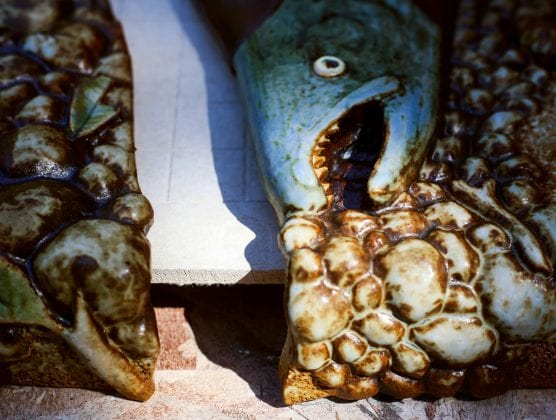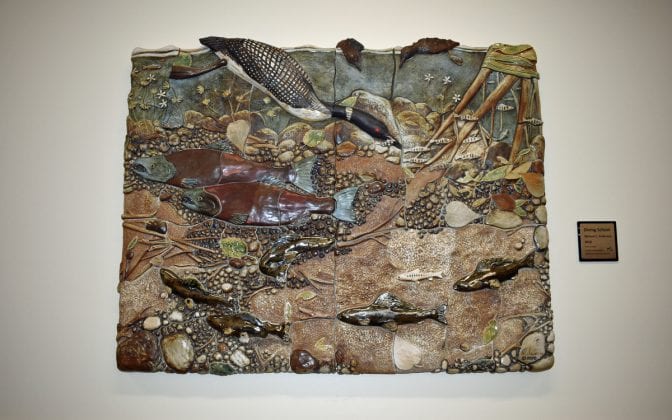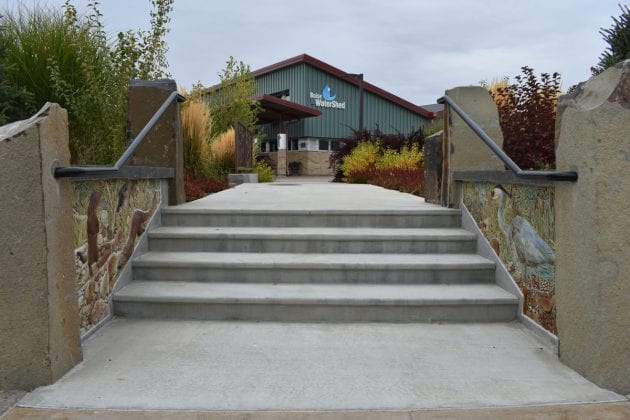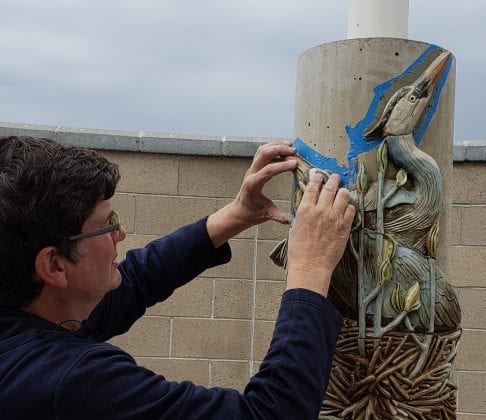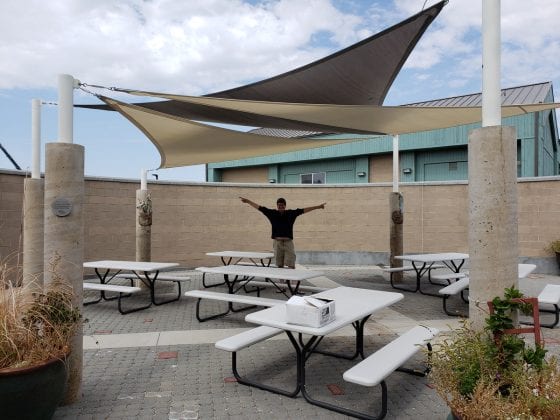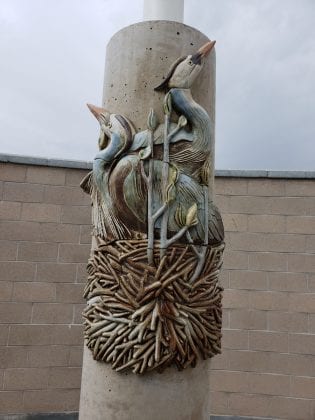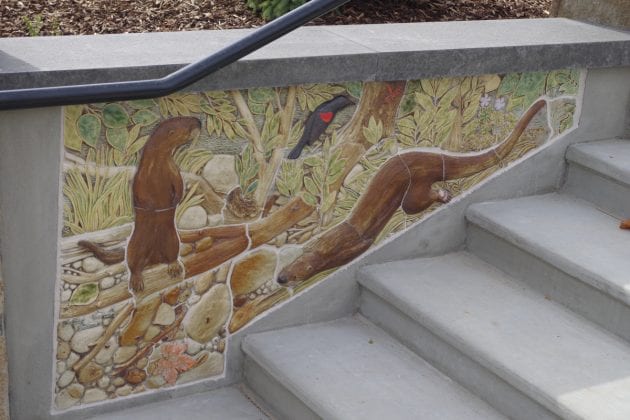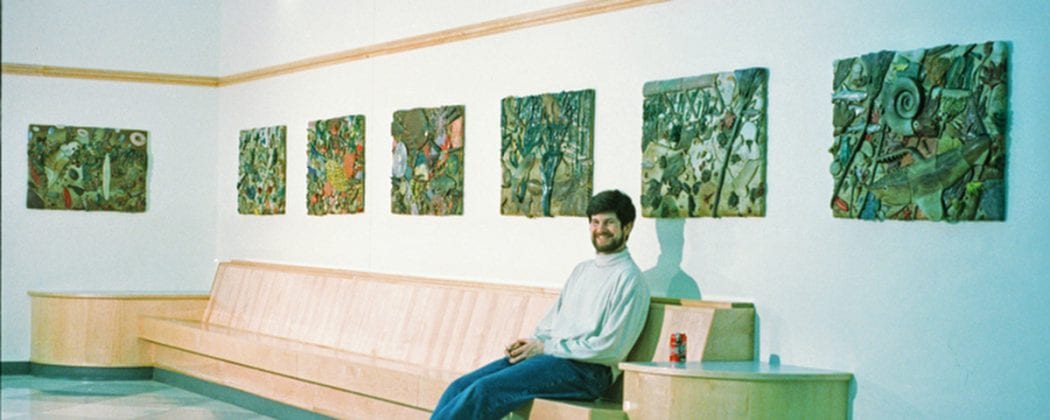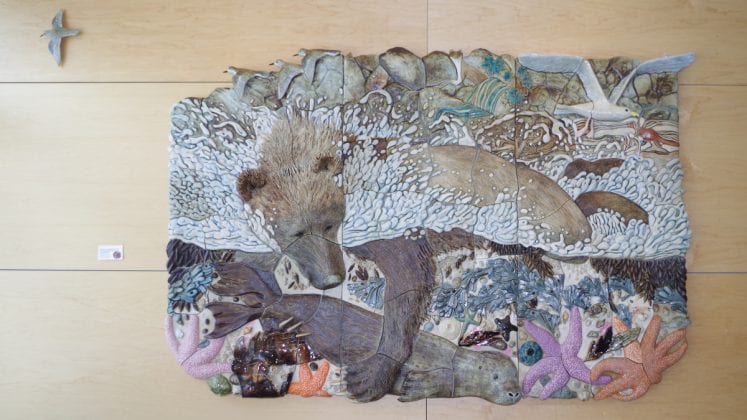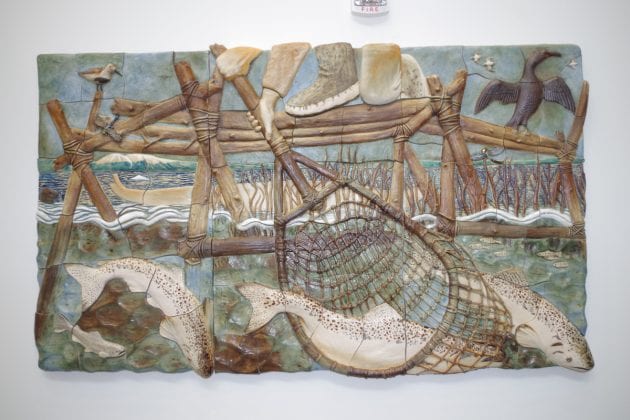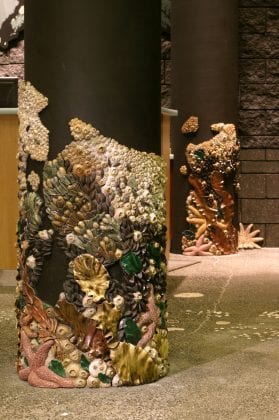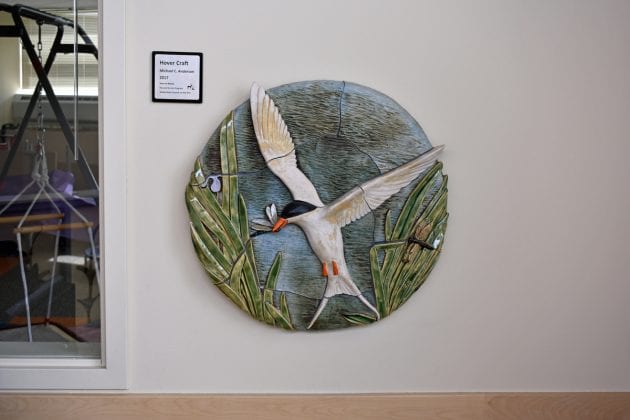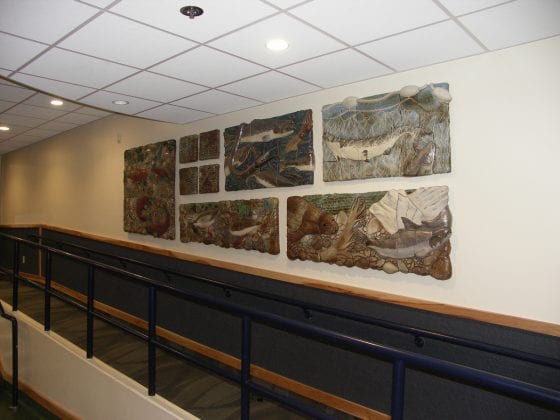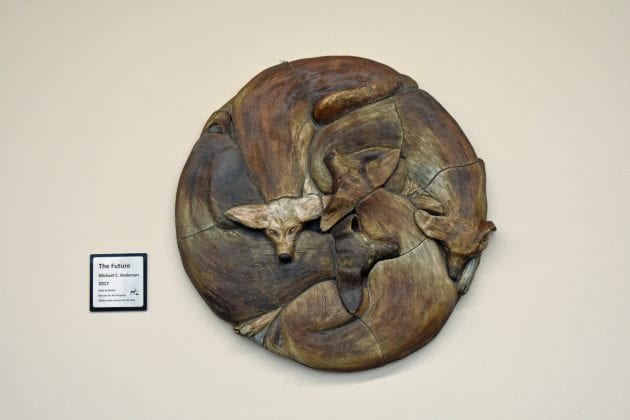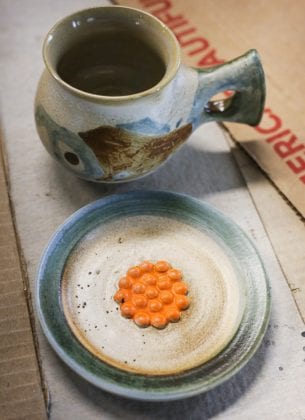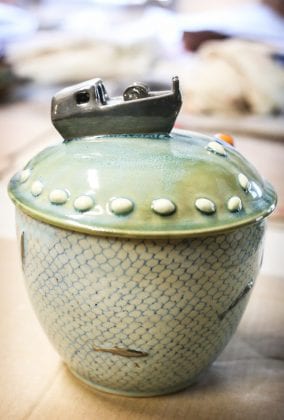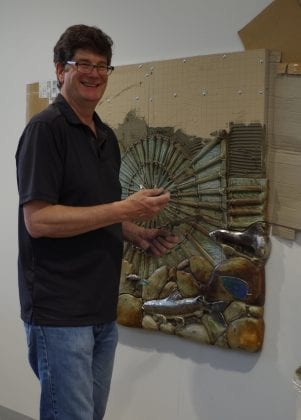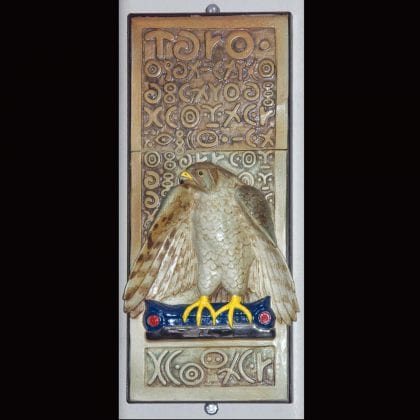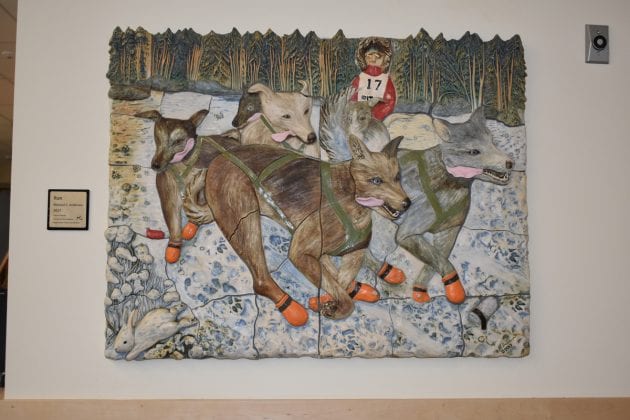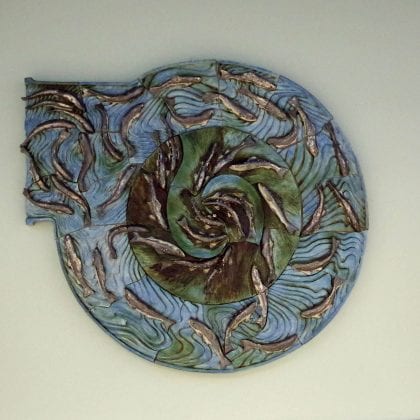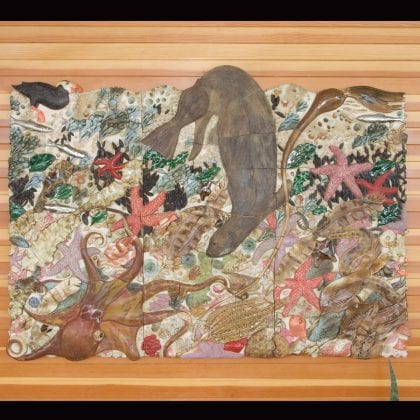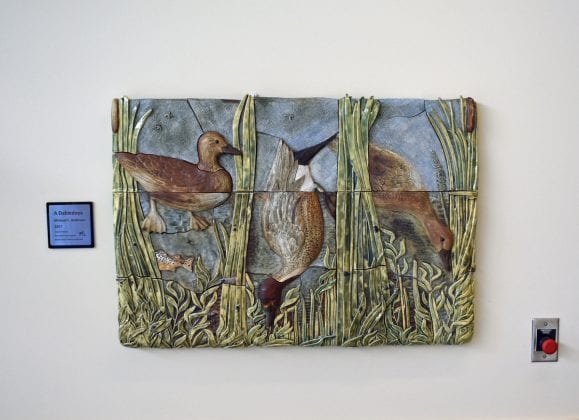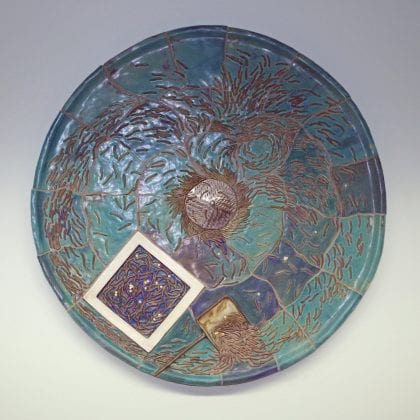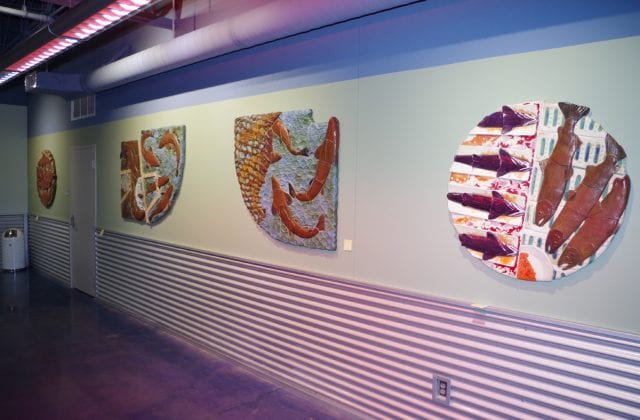Cordova artist Michael Anderson’s intricate tile work featuring designs of animals, plants and their natural habitats line the walls of buildings from Alaska to Idaho, providing education-based art for thousands of visitors.
His creative scenes of loons diving, salmon swimming and dogs mushing are on display in schools in Wasilla and Juneau, at the William Jack Hernandez Sport Fish Hatchery in Anchorage and the Islands and Oceans Visitor Center in Homer to name a few.
Anderson’s most recent work featuring cormorants and herons nesting can be found at the Boise WaterShed Environmental Education Center in Boise, ID.
“He is the only artist … that speaks to the ecology and the interdependence of plants and animals on the healthy Boise River,” said Cindy Busche, Watershed education program manager. “We bring that into almost every tour and every activity that we lead outside in the River Campus.”
The Boise WaterShed facility has the largest concentration of public art in Idaho, said Busche.
Anderson’s original work for the Boise WaterShed occupies the front walkway, while his newest piece consists of six, one-foot diameter pieces fitting around columns of a shade structure located behind the WaterShed. His work is part of the River Campus, which occupies two acres surrounding the education center.
The City of Boise’s Department of Arts & History placed a call for artists. Anderson was selected along with eight other artists to be a part of the overall development of the WaterShed River Campus, said Karl LeClair, the public art program manager for the Boise City Department of Arts & History.
LeClair called Anderson’s work highly detailed with a naturalistic approach, helping represent the natural species of the area.
Anderson traveled to Idaho to install the first two columns at the beginning of October.
“Some of the best times in my life have been doing things in the environment … and so it seems natural to be able to share those things with other people …,” he said.
For each project, Anderson researches the environment extensively and gains hands on experience and time in the chosen environment. “His use of composition and color really make the works eye catching and engaging,” LeClair said.
During his research for the Boise River project, Anderson spent time biking around the Boise River when the herons build their nests in spring. He recalled seeing a heron fly over with a stick in its mouth, “so we just kind of followed the heron until we found them.”
“That really impressed me that he was that connected to his subject matter,” Busche said.
Anderson takes what he sees and experiences and transforms it into complete environmental scenes, depicting changing landscapes and the species that reside in it.
“There are a lot of things happening in a river or woodland or anywhere that we don’t even realize is going on,” he said.
For this installation, Anderson worked on creating rounded tiles, a challenging process for the seasoned artist.
“With clay fire you always get some warping and so I was worried about that …” he said. “Flat clay bent wants to flatten.”
If the tile wasn’t warped enough before firing, then the clay wouldn’t be dense enough to hold its shape.
“I’ve always just loved sharing the world and I’ve always just loved challenges and it works pretty well for me,” he said.
